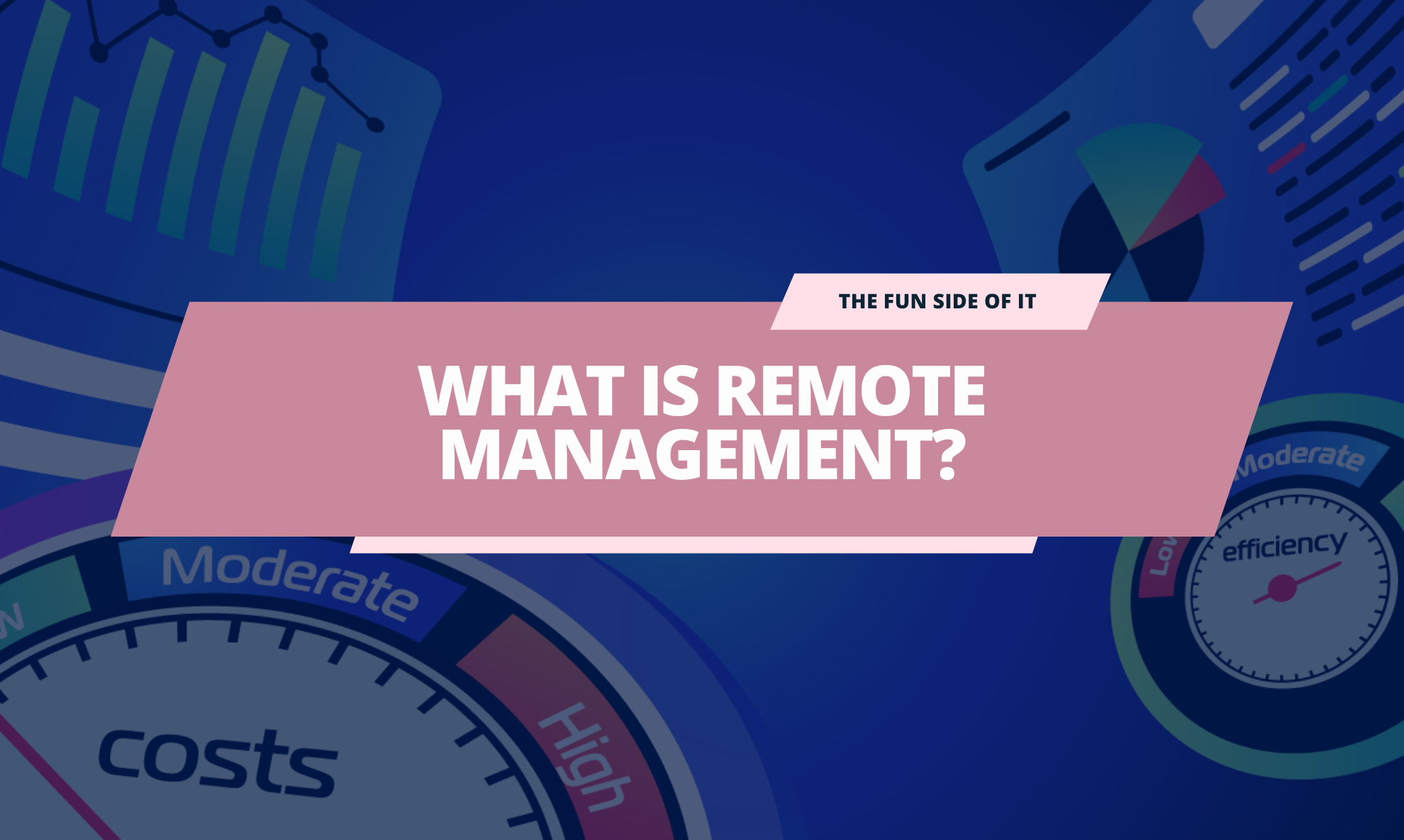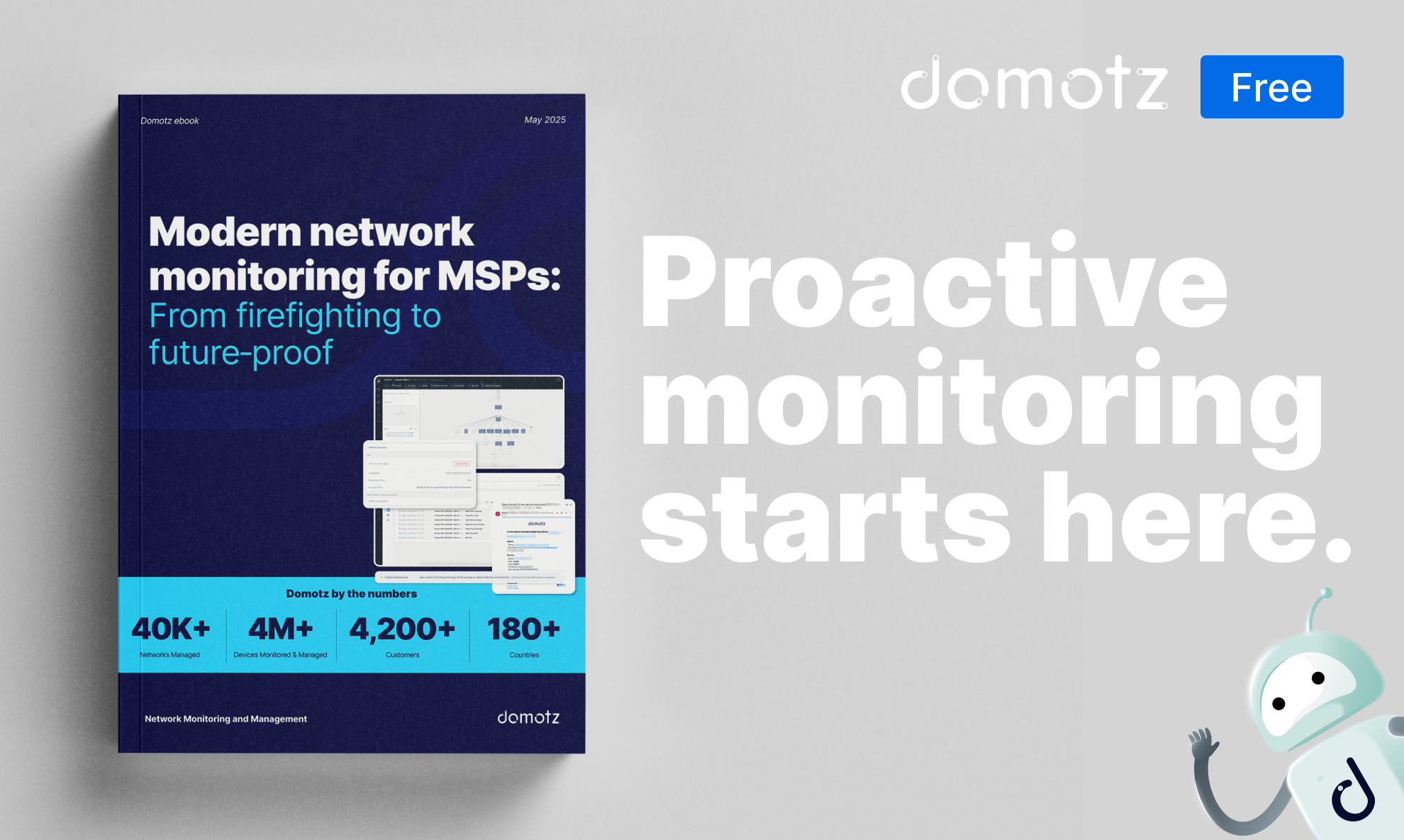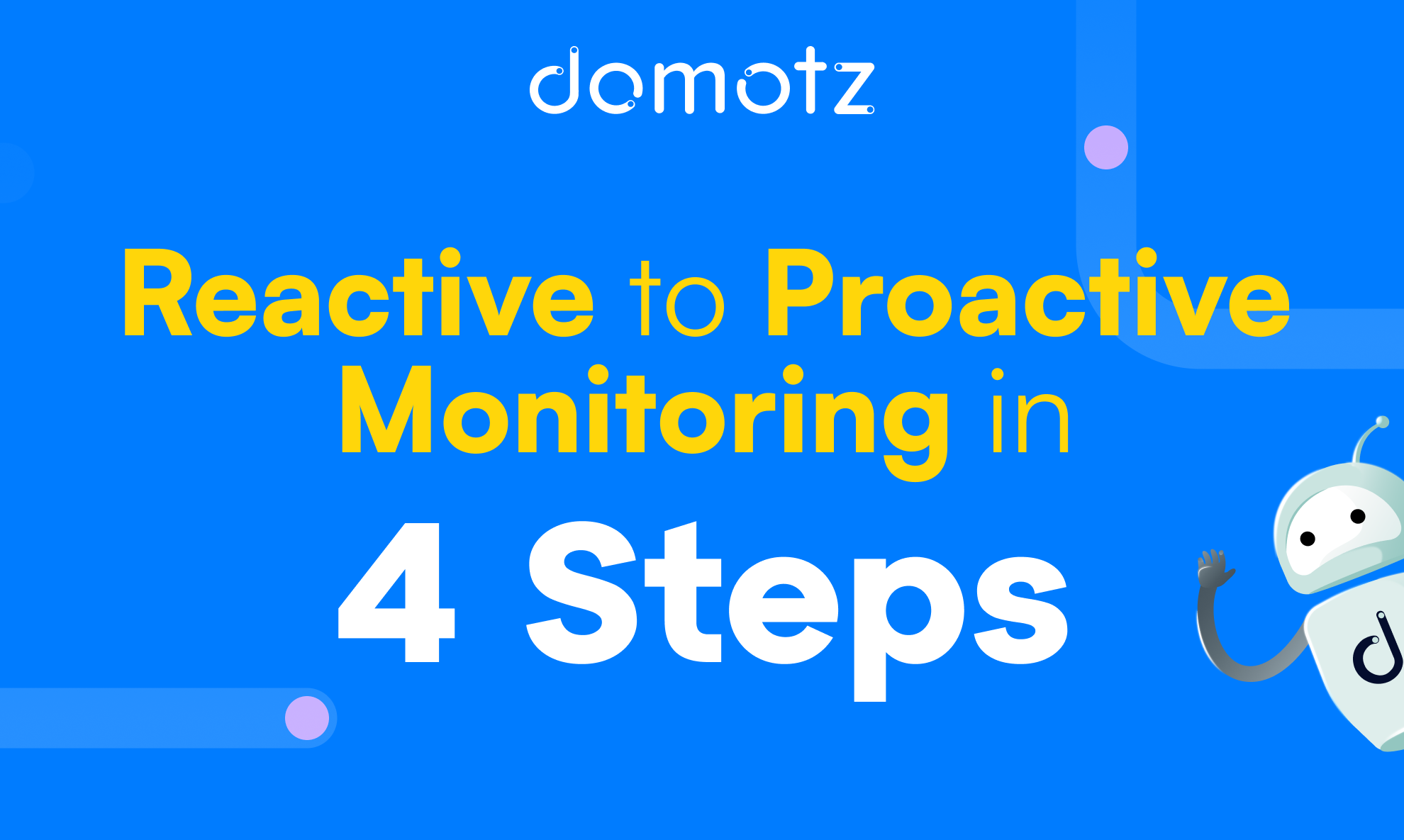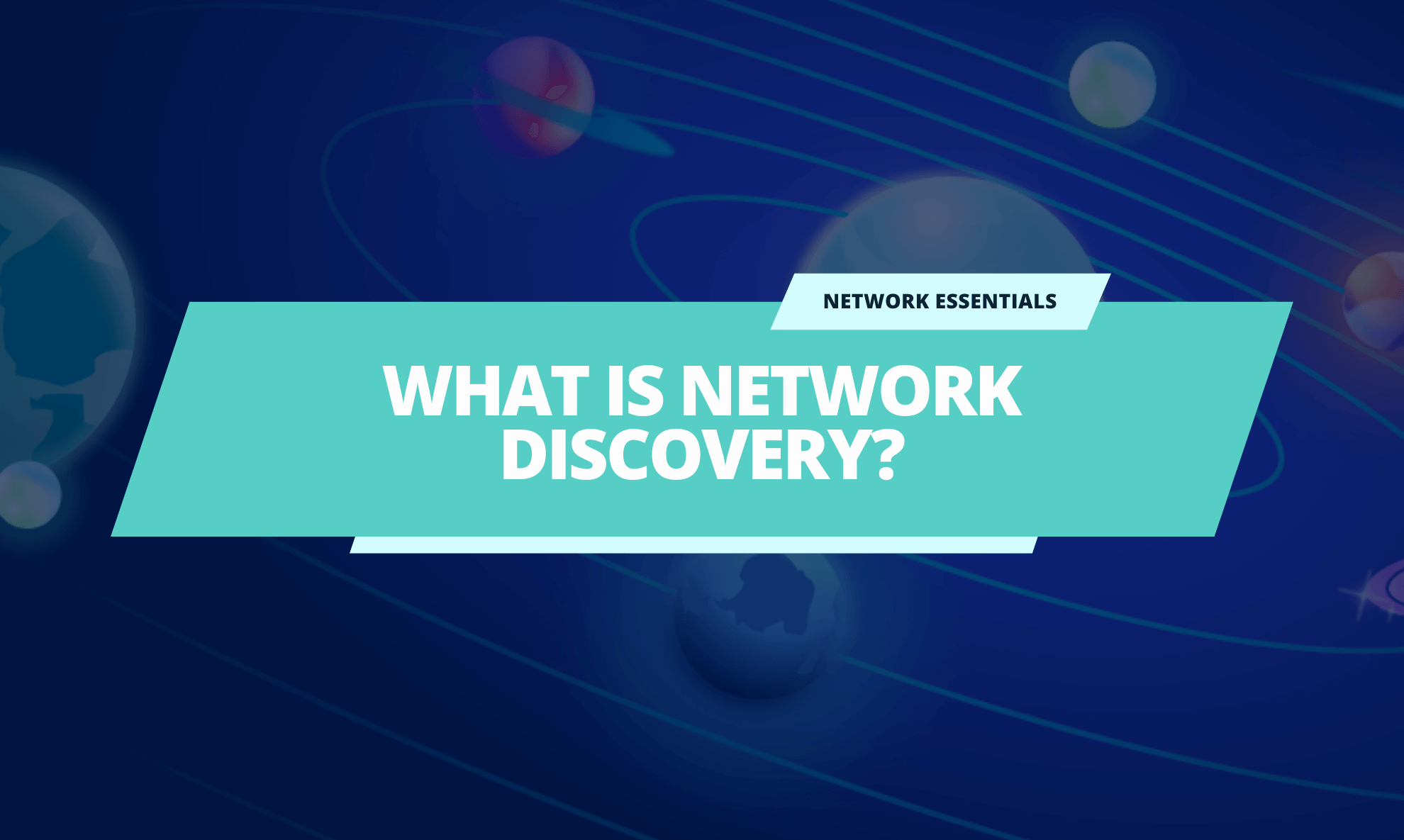In today’s increasingly connected world, where connectivity is paramount, the need for efficient remote management has become increasingly vital. Whether you’re a business owner, a network administrator, or a Managed Service Provider (MSP), the ability to monitor and control your network infrastructure from anywhere is a game-changer.
In this article, we will explore what remote management is. In addition, we’ll discuss how Domotz can enhance your remote management experience and empower you to take control of your network infrastructure with ease and efficiency.
In this article:
- What is remote management?
- What is a remote management tool?
- What common features do a remote management tool offer?
- What is network management?
- What is a network management tool?
- What common features do a network monitoring tool offer?
- What are the differences between remote management tools and network monitoring systems?
- How to use Domotz to enhance your remote management
What is remote management?
Long story short, remote management refers to the best practices of overseeing and controlling systems, processes, or devices from a location separate from the physical site where they are situated. Additionally, remote management enables efficient monitoring, administration, and troubleshooting of various resources. These can include networks, servers, or software, without the need for direct physical access.
What is a remote management tool?
Remote management and monitoring (RMM) tools allow you to evaluate the overall performance of your network. Such systems help you coordinate all your IT processes and automation to check everything is operating correctly and efficiently with no issues.
What common features do a remote management tool offer?
- Remote Access: Remote access capabilities to connect and control devices from a central location. This feature enables tasks such as software installations, updates, and configuration changes without physically accessing the device. Simply put, you can monitor multiple endpoints and clients simultaneously.
- Automation: Remote management tools help you automate more processes to streamline repetitive tasks. You can create workflows to automate routine processes, saving time and reducing manual effort.
- Patch Management: Such tools often include patch management functionality, which helps automate the process of applying software updates and security patches across multiple devices. It ensures that systems are up-to-date and protected against vulnerabilities.
- Monitoring and Alerts: Monitor system health and performance parameters. Configure alerts when predefined thresholds are exceeded, enabling prompt response to potential issues.
- Reporting and Analytics: RMM tools help you collect data to generate insights. As a result, you can visualize information related to system performance, security incidents, and other key metrics. This helps in identifying trends, troubleshooting issues, and making informed decisions.
What is network management?
Network management is the process of continuously observing and analyzing the performance, availability, and security of a computer network. It involves systematically collecting and examining network data, including traffic, device status, bandwidth usage, and other relevant metrics.
What is a network management tool?
A network monitoring tool is a system that monitors and manages computer networks. It helps you monitor network devices, track network performance metrics, and identify and troubleshoot network issues.
Such tools collect and analyze data from various network sources, such as routers, switches, servers, and applications, and present the information in a centralized interface for easy monitoring and analysis.
What common features do a network monitoring tool offer?
Network monitoring tools typically provide features like real-time monitoring, alerts and notifications, performance analysis, traffic analysis, and reporting. Here is a list of some common network monitoring tools.
What are the differences between remote management tools and network monitoring systems?
Remote management tools manage the access and control of remote systems, performing tasks like software installations, updates, and troubleshooting. Their focus is on managing individual devices or systems remotely.
On the other hand, network monitoring systems monitor and analyze network traffic, devices, and performance. Such systems might have some remote monitoring and management features, but usually, they won’t have all of them. They provide you with insights into network health, bandwidth utilization, security threats, and overall network performance. In other words, network monitoring systems focus on the collective monitoring and analysis of network infrastructure rather than individual device management.
To summarize, these systems certainly overlap across different functions. However, you can use both of them together to achieve the best results.
How to use Domotz to enhance your remote management
While RMM tools excel in managing endpoints, such as servers, workstations, and applications, Domotz focuses on network infrastructure, endpoint monitoring, and server monitoring. With its robust set of features and cloud-based platform, Domotz empowers users to seamlessly monitor, troubleshoot, and optimize their networks from the comfort of their own devices. By integrating Domotz with RMM tools, you can gain a holistic view of your client’s networks and efficiently prevent issues.
Prepare to discover the myriad benefits and possibilities that Domotz brings to the table, propelling your remote management experience to new heights of efficiency and convenience.
Here are some key ways to use Domotz to enhance your remote management:
- Network Observability: Domotz provides detailed insights into network performance, including bandwidth usage, latency, and connectivity status.
By using these network analytics with your RMM tools, you can identify and address network-related issues quickly.
- Device Monitoring and Management: Domotz offers comprehensive device monitoring, identifying connected devices, their status, and usage patterns.
Using such features together with your RMM tools allows for centralized device management, enabling proactive maintenance, firmware updates, and security patching.
- Remote Access and Troubleshooting: You can use Domotz remote access capabilities to troubleshoot network issues and remotely manage devices.
Using these tools with an RMM system streamlines remote management tasks, allowing your team to access devices seamlessly from a single interface.
- Alerts and Notifications: Domotz offers customizable alerts and notifications for network events, device connectivity changes, or performance degradation.
By integrating these alerts with your RMM tool, you can proactively respond to critical issues, ensuring minimal client downtime.
- Streamlined Reporting: Domotz provides comprehensive reports on the network performance, device inventory, and historical data.
The combination of our reporting capabilities with your RMM tool allows you to generate detailed insights for client reviews, capacity planning, and performance optimization.
The integration of Domotz with RMM tools offers several key benefits, including:
- Efficiency: Streamlining your workflows and centralizing management enables you to manage network infrastructure and endpoint devices efficiently.
- Cost Optimization: By proactively identifying and resolving network issues, you can minimize costly service disruptions and improve resource allocation.
- Client Experience: Proactive monitoring and timely issue resolution result in less downtime, better network performance, and overall client satisfaction.
- Scalability: Domotz’s ability to handle multiple networks and RMM tool integration allows for seamless scalability, supporting the growth of your MSPs business.
Conclusion
A network monitoring system plays a vital role in enhancing remote management capabilities. By providing comprehensive network visibility, device monitoring, remote access and reporting, Domotz complements RMM tools, resulting in better efficiency, client experience, and optimization.
Leveraging the power of Domotz and RMM integration empowers you to effectively manage and maintain complex networks in today’s remote working landscape. Most of all, you gain unprecedented visibility into your networks, proactively detect issues, and effectively troubleshoot problems from anywhere in the world.
Further reading:
- What is network management?
- What is a network management tool?
- Domotz News from Q2 (April to June) 2023



